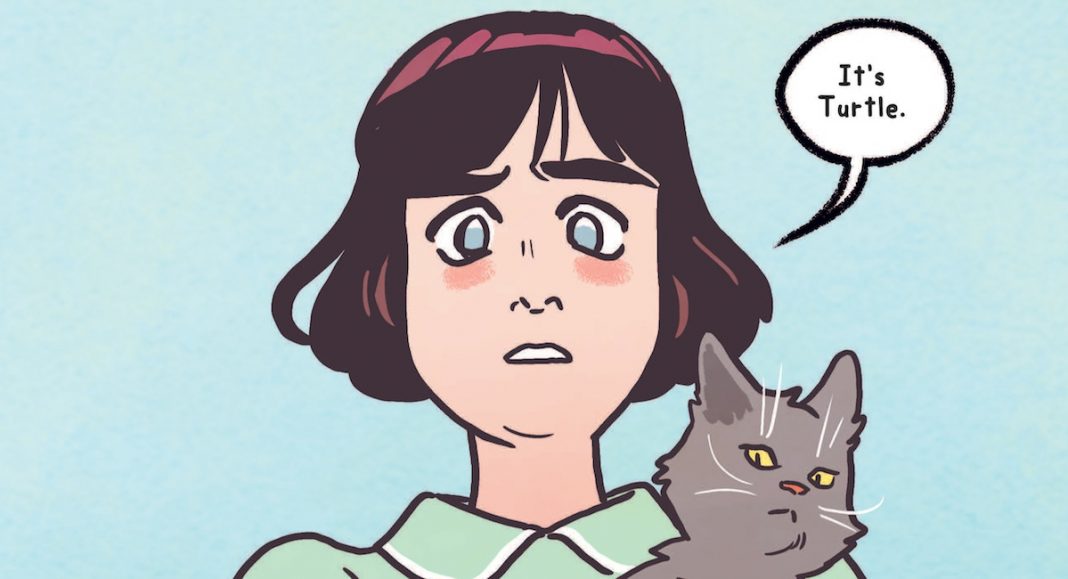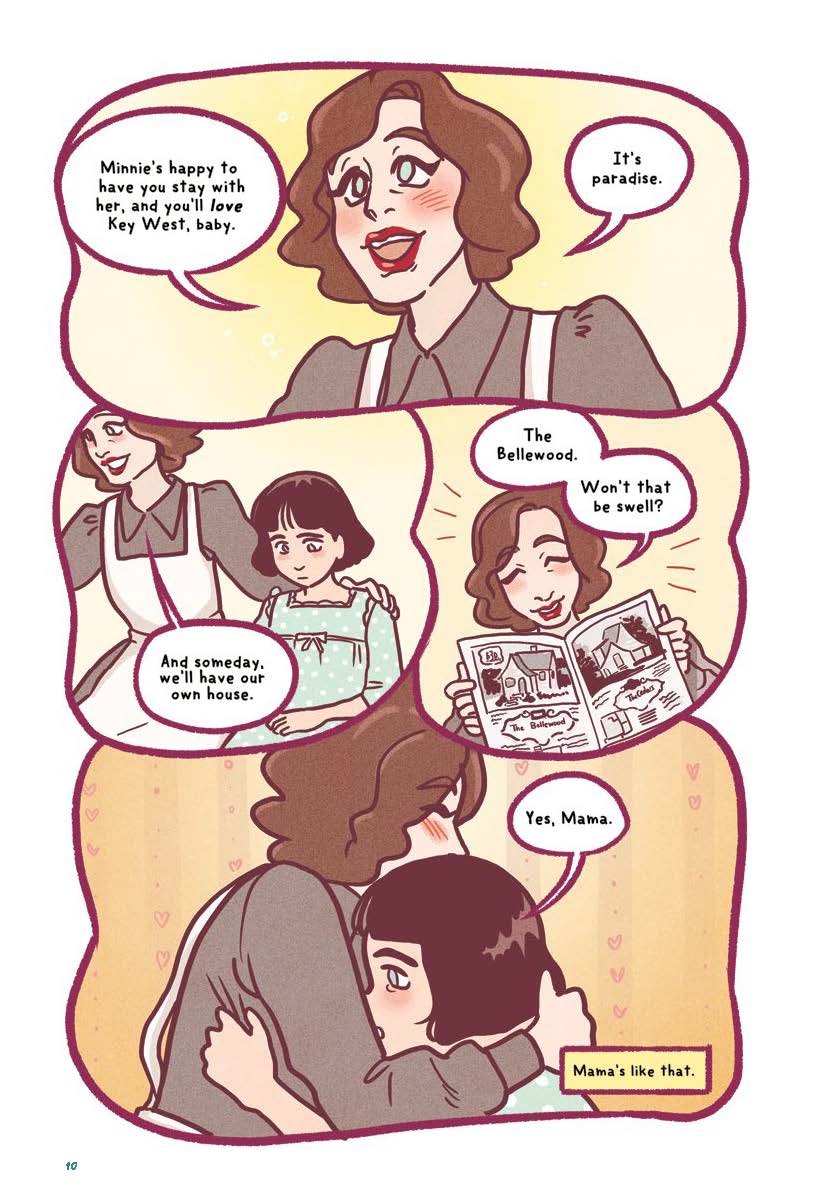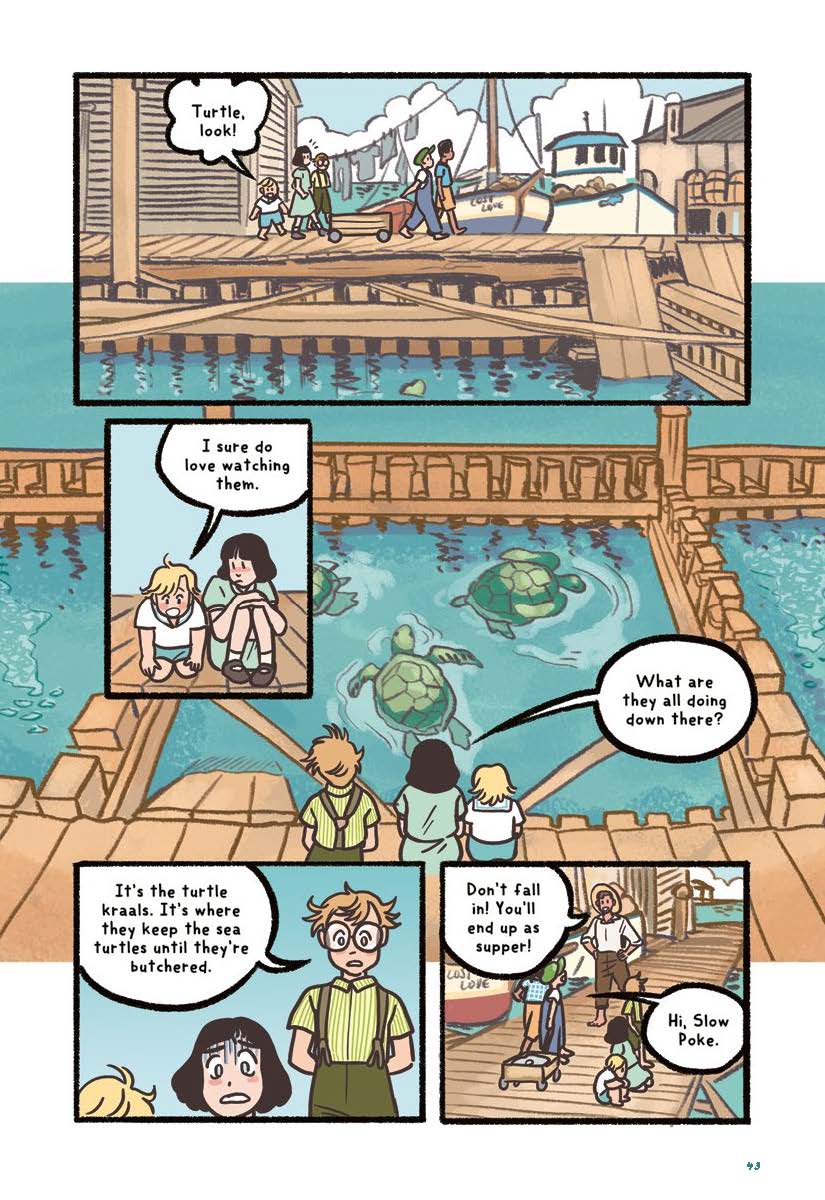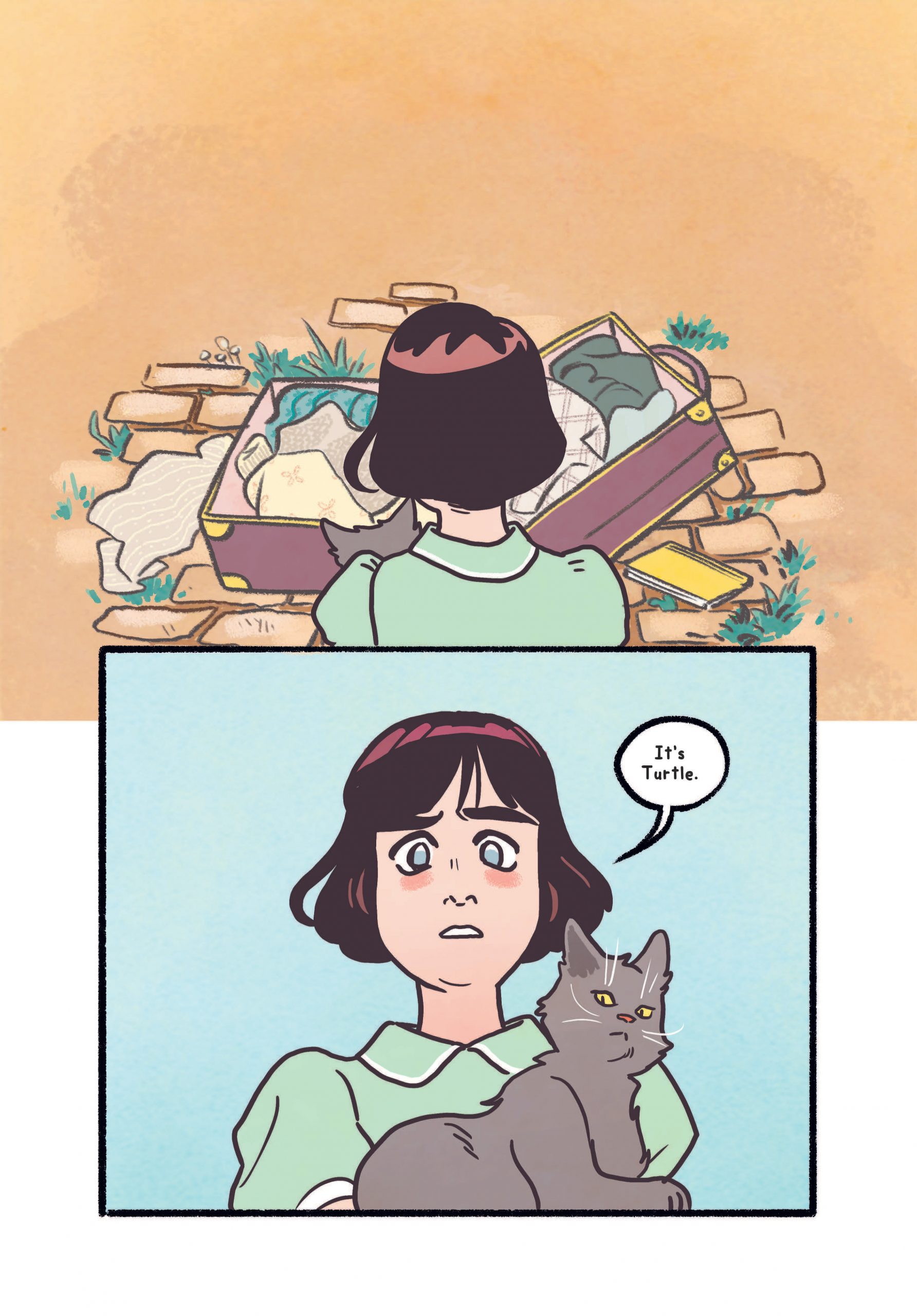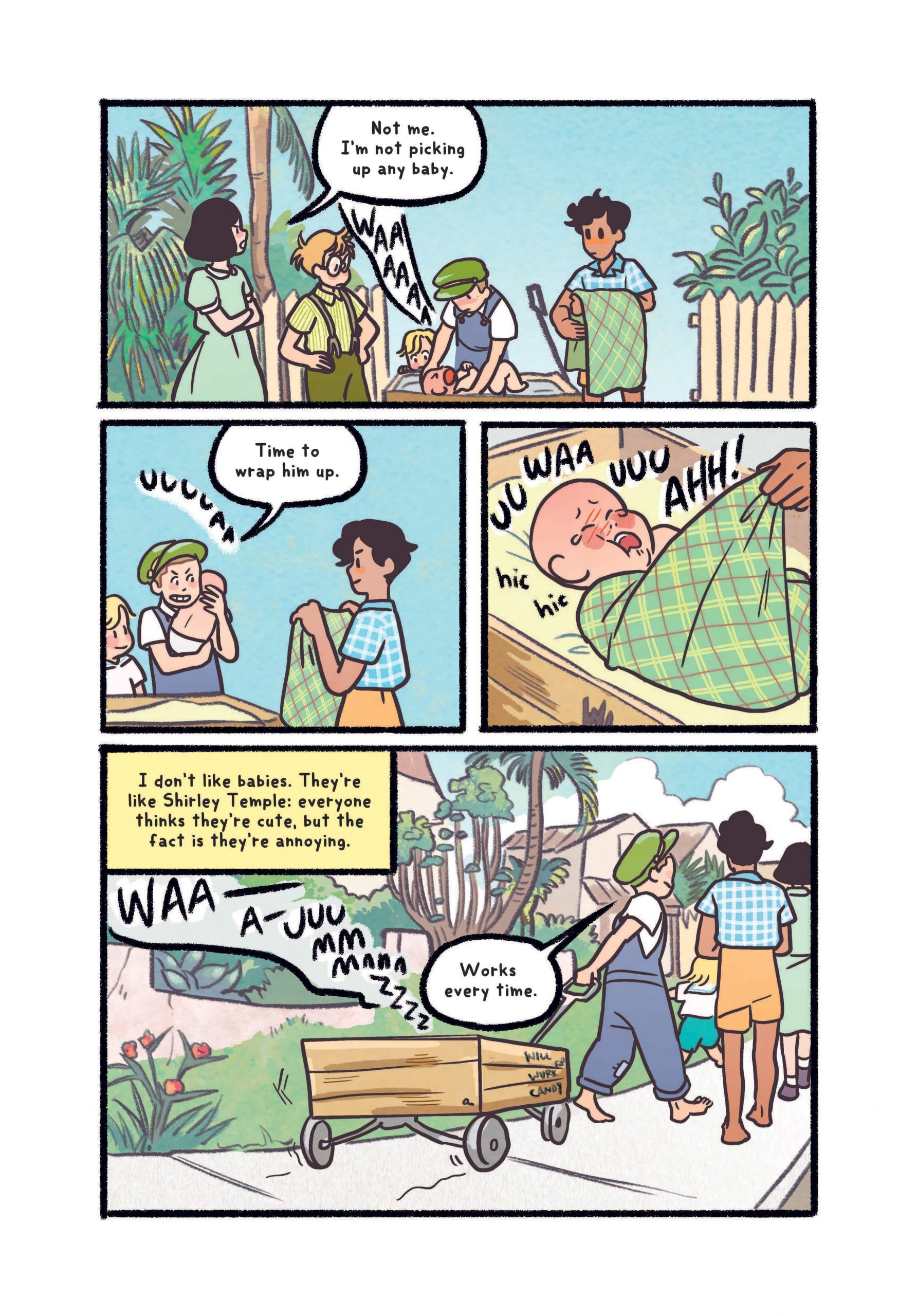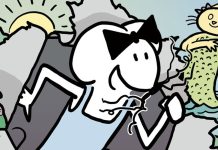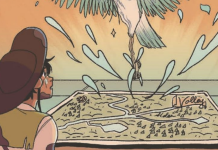In the new graphic novel Turtle in Paradise by Jennifer L. Holm and Savanna Ganucheau, with colors by Lark Pien, Turtle is an eleven-year-old who has already seen too much to fall into the trap of optimism. With her mother working a housekeeping job that doesn’t allow for children, Turtle is bundled off to Florida to live with her extended family. But while Turtle may believe she’s seen anything, she isn’t prepared for what she uncovers in the Sunshine State!
Turtle in Paradise will be available at your local bookstore and public library beginning on June 29th, 2021. In the meantime, The Beat caught up with artist Ganucheau over email to find out more about the process of adapting Holm’s prose novel to the comics panel, what went into re-creating 1930s Key West (and what shrimping boats have to do with it), and even got her to spill her secret formula for drawing adorable infants! Plus, she shared some of the details of her process with us, using pages 10 and 43 for reference.
Looking at the two pages side by side, it seems the color palette has shifted, as well as the shape of the panels themselves when observing Turtle’s memory. How did you and colorist and Lark Pien decide on how to differentiate between memories and present time?
SAVANNA GANUCHEAU: We talked about a lot of things when It came to differentiating the flashbacks from the present. In addition to changing up the panel borders myself, I told Lark I wanted to evoke a sepia tone feel but we agreed that we wanted it to feel more creative. Lark did amazing work making the colors in Turtle memorable. I think what she did with the pink color hold on the balloons is unique and makes the flashback pages stand out.
On page 43, we see the setting of Key West as the kids explore the docks. What portion of this was from reference materials and what portion was imagination? Telling a story set in a real place, did you feel pressure to stay accurate to the historical setting itself?
GANUCHEAU: Pressure from myself for sure. Haha. I absolutely wanted it to be accurate. I’m a huge fan of historical fiction and while there’s a few anachronisms in the book (clothing mostly) I really tried to make it as accurate as I could. The docks were particularly hard because they simply do not exist in the same capacity as they did in the 1930s. And there’s really only a small trace of their layout in the documents I found (I found some Sanborn Maps that gave me a vague idea). For this scene I used a lot of souvenir cards from the 30s to get a sense of how the turtle kraals looked. In fact panel one is heavily inspired by one of those cards.
Looking at Turtle with her mom, you see the wonder in her mama’s eyes, but the hesitance in Turtle’s. For such still panels, what kind of techniques do you use to convey the emotion of the panel?
GANUCHEAU: When I was adapting the novel I was always hyper aware that for the graphic novel the reader would seldom have the luxury of hearing exactly what Turtle was thinking. So, it was really important to me to concentrate on Turtle’s expressions and actions to show her inner thoughts. Turtle and her mom are very much opposites, and I think this moment is interesting because Sadiebelle is trying her best to comfort her daughter. Turtle is steps ahead of her mother, and by being agreeable Turtle is comforting Sadiebelle in a much more mature way. Even still I wanted to show Turtle being a kid and holding back tears at the thought of leaving her mother, because even though Turtle thinks her mother is ridiculous…she loves her very much.
Can you tell us bit about how you came to be involved in this project?
GANUCHEAU: I was approached by RHG to do this adaptation through my agent. I read the novel and instantly fell in love with the setting and characters. Frankly, it reminded me of books I read as a kid. Jenni, meanwhile, was familiar with my work through ‘Bloom’ and she agreed it was a good match so it all went ahead!
Why are comics such a good medium for historical fiction?
GANUCHEAU: Showing history through visuals and stories (real or fictional) I think is a wonderful way for people to relate to historical events in a very human way. I think people have trouble being invested in certain eras of time. Showing day to day life and interactions between characters can help people feel involved in that history and be willing to learn more about it.
What went into presenting an accurate depiction of 1930s Key West?
GANUCHEAU: I did a lot of research for sure, but Jenni was able to help me a lot. She had done tons of research for the initial novel, and I was able to take advantage of that. The clothing was something I had a great time researching. I stayed away from catalogues of the time and focused more on photos of children in rural areas that exist from the 1930s.
Did any of the characters, creatures, or locations present a particular challenge for you during the developmental process?
GANUCHEAU: Definitely the docks, like I mentioned before, but boats were another thing that was particularly challenging for me. The specific spongeing boats used in 1930s Key West were rarely photographed and it was difficult for me to find a comprehensive reference that wasn’t a vague side view. And in the 1940s Key West saw a huge boom in the shrimping industry (taking over most of the spongeing industry) so I couldn’t even use references taken at a later time. Basically, if I saw shrimping boats in a picture I knew it was from the 1940s and didn’t use it. Haha.
In addition to all of the other amazing art in Turtle in Paradise, we also get some absolutely adorable renditions of babies! What goes into depicting the perfect baby?
GANUCHEAU:
- Dots for nose.
- Big eyes.
- Keep ‘em round! No hard edges.
- Maybe like…the tiniest eyebrow. A suggestion of an eyebrow.
- No neck.
Hope that helps!
Turtle in Paradise will be available at your local bookstore and public library beginning June 29th, 2021.


